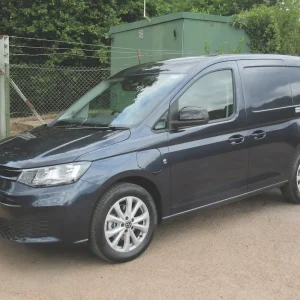For a long time Mitsubishi’s Outlander PHEV Commercial was the only hybrid LCV in town, following its launch in 2014.
Other products are now coming to market – notably the Ford Transit Custom PHEV – which offer more practical load-carrying solutions, but Mitsubishi’s 4×4 remains the one with go-anywhere capability along with the capacity to offer zero-emission inner-city driving when in EV mode.
Engine and gearbox
The new Outlander PHEV Commercial, which went on sale in February and is once more based on its passenger car sibling, is powered by a 135hp 2.4-litre petrol engine and two electric motors of 70kW and 60kW.
Under NEDC-correlated figures it achieves a combined fuel economy of 159mpg, a pure-electric range of 33 miles, and CO2 emissions of 40g/km (respective figures under more realistic WLTP testing are 139mpg, 28 miles and 46g/km).
With an electric motor on each axle the vehicle remains four-wheel drive at all times, and the driver is able to choose between normal, snow and lock drivetrain settings.
Load bay
The Commercial comes with a floor-to-ceiling bulkhead, which is solid at the base with a protective metal mesh top half.
The load area is 1,650mm long, 1,000mm wide between the wheel arches, and 800mm high at the tailgate, with a maximum payload of 510kg and load volume of 1.6m3.
As a car-derived hybrid van a flat load floor sits above the battery and replaces the back seats and, although this provides some discreet storage for small items underneath, it also wastes a good deal of load space. The load area is accessed by a rear tailgate, and the two rear side doors are retained from the passenger car, which can make it tricky getting things in and out.
Interior and equipment
Standard equipment is generous and includes 18in alloy wheels, a heated windscreen, heated seats, a heater and aircon scheduler function, a reversing camera, an electronic parking brake, and a touchscreen multimedia system with Apple Carplay and Android Auto connectivity, Bluetooth connection, and DAB radio.
The cabin is carried over from the car version, meaning it offers far less storage that you would expect with a commercial vehicle.
Driving
On the other hand, the Commercial’s car origin bequeaths excellent performance and handling courtesy of a lively engine coupled to slick automatic transmission. Switching to charge mode allows electricity generated by the engine to be stored in the traction battery. We were impressed by how efficiently charge mode replenished the battery’s resources on relatively short journeys in mixed driving environments.
Regeneration when braking also puts some charge back into the battery, but to return it to full strength you need to plug into a charging point.
Save mode maintains the level of charge in the battery while driving on faster roads, allowing you to switch back to electric power when entering an urban low-emission zone.
Over half the mileage we covered in the Mitsubishi was in electric mode but we were grateful to fall back on the petrol engine on one occasion when the app to activate a charging point malfunctioned. Until the EV charging infrastructure is improved this versatility is a strong selling point for hybrid LCVs.
Mitsubishi Outlander PHEV Commercial Petrol Hybrid Auto 4WD
Price (ex VAT, inc Gov grant) £25,121
Price range (ex VAT, inc G.g) £25,121
Insurance group 12E
Warranty 5yrs/62,500mls
Service intervals 1yr/12,500mls
Load length 1,650mm
Load width (min/max) 1,000/1,320mm
Load bay height 800mm
Gross payload 510kg
Load volume 1.6m3
Engine size/power 2,442cc/135hp
Combined fuel economy 159mpg
CO2 40g/km





